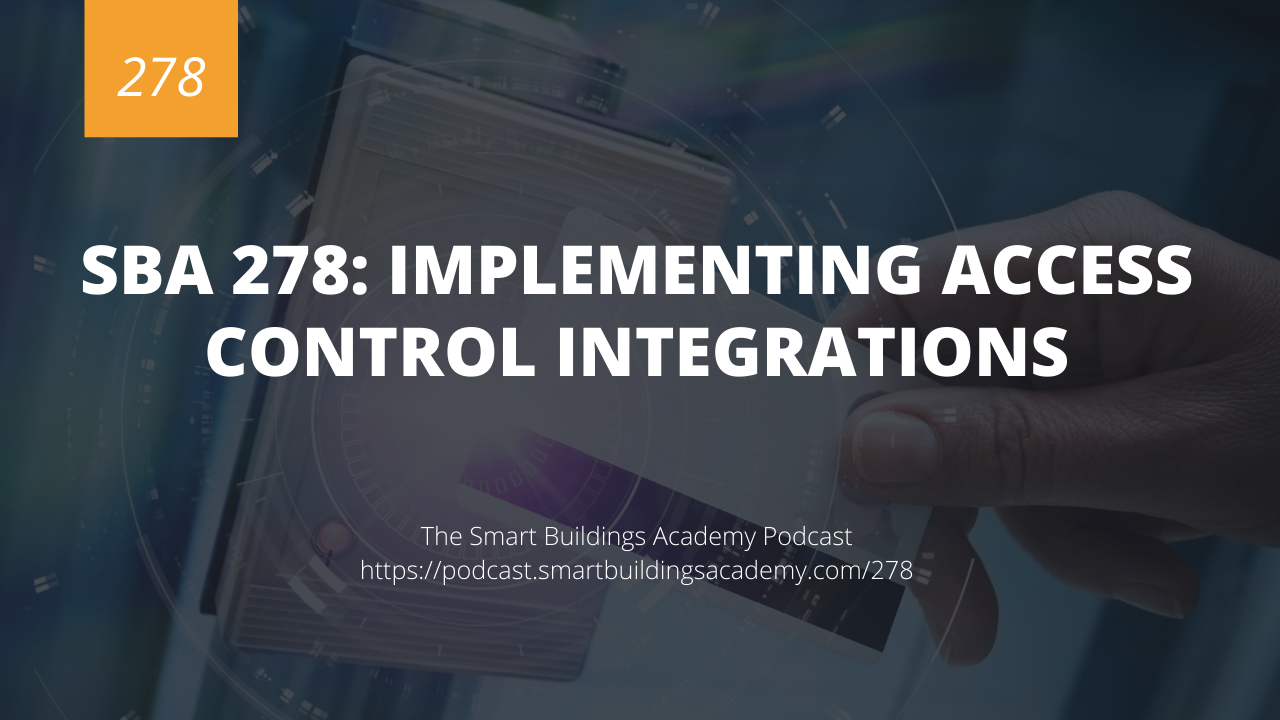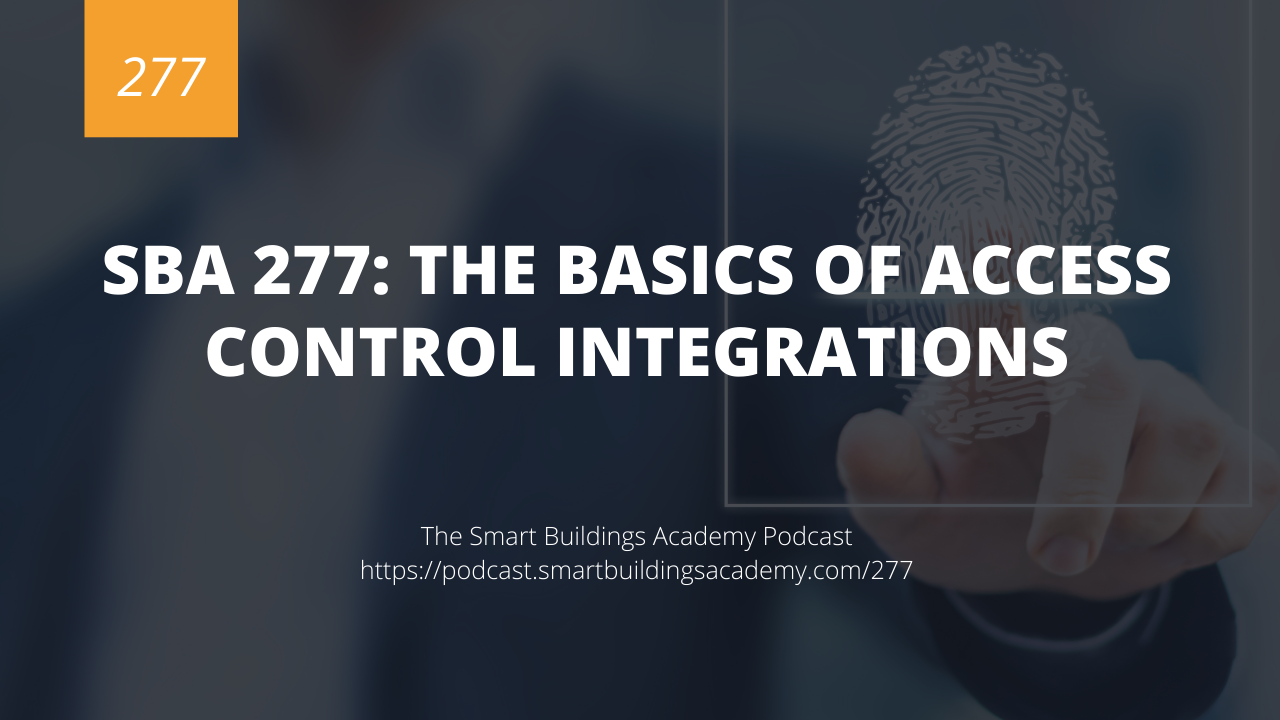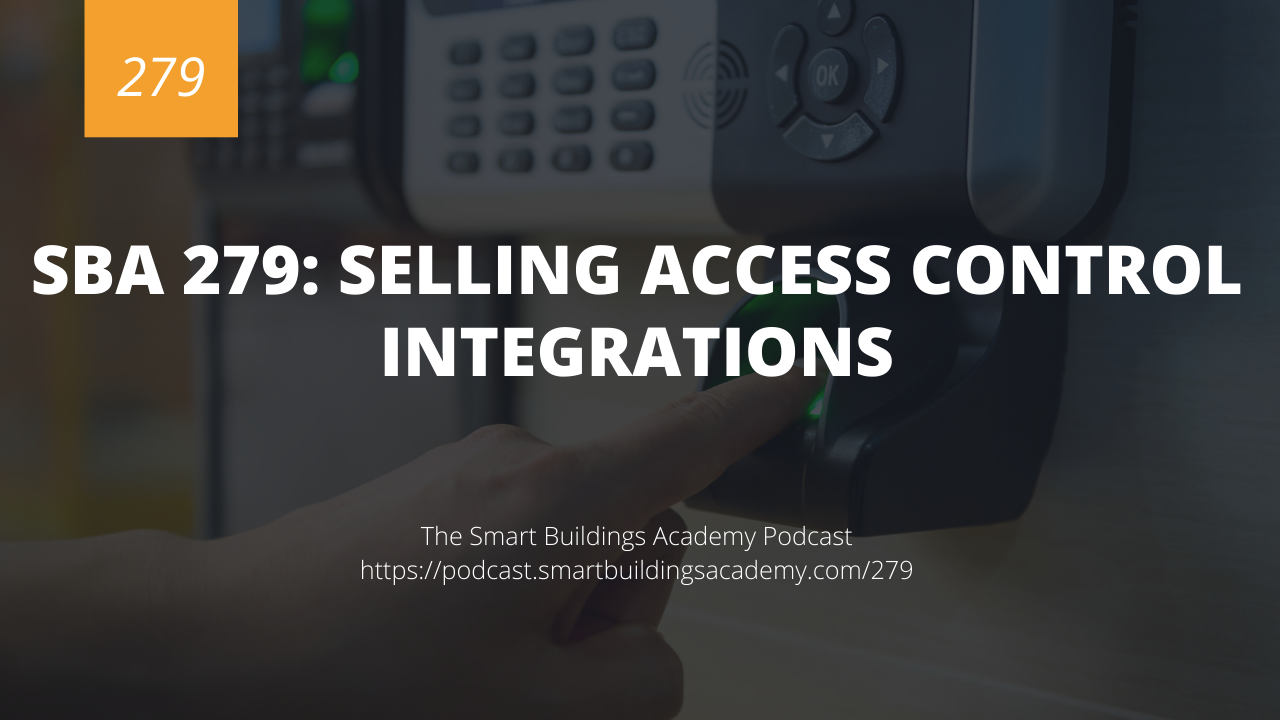Integrating access control systems into your building automation systems can be difficult.
In this podcast episode we discuss strategies and tips for integrating access control systems into your BAS.
Click here to download or listen to this episode now.
Resources mentioned in this episode


Transcript
Phil Zito 0:00
This is the smart buildings Academy podcast with Phil Zito Episode 278. Hey folks, Phil Zito here and welcome to Episode 278 of the smart Billings Academy podcast. In this episode, we are going to continue our discussion on implementing access control integrations and ultimately on access control integrations as a whole. Now, as I discussed in Episode 277, this is going to be a shorter episode just simply due to the fact that with access control integrations, the reality is you are at the mercy of a driver or an API. For most access control integrations. Before I dive in too deeply, as always, everything can be found at podcast at smart buildings academy.com, forward slash 278. Once again, that is podcasts that smart buildings academy.com, forward slash 278. Alright, so access control integrations, like I said, they are primarily going to be integrated via API's, drivers, or utilizing a product that already has those capabilities built into the product. So with most of our solutions, with most of what we're doing, we are going to be going and taking a driver. And we'll take that driver and add it to our building automation system if we can. And we will then go and pull in the access control system points via the driver. And we will use when we're using those points, we will use those points typically to determine occupancy, we'll use those points to detect if someone's in a room and then go and turn on or offer hva AC systems. So what does this look like? Well, depending on the building automation system, it looks like first off figuring out what driver works with your building automation system. Sometimes that's contacting that building automation system Systems Integration group, sometimes that is just activating the driver from a list of drivers and maybe paying a licensing fee. It just depends, you know, it varies. But once you've done that, once you have got that driver activated and pulled into your building automation system, then you just follow the driver configuration rules set up the communication bus. Sometimes it's physical, sometimes it's IP, most of the time, it's IP with access control. And you then go and pull the points into the building automation system and set them up accordingly. Pretty straightforward. API is a little bit more complex. We've discussed API's in great detail throughout this kind of series on integration. And I will say that with access control, it's no different, you have to understand the API, you have to typically get yourself a token or some sort of key in order to utilize the API, you have to be able to then understand the SDK, the software development kit related to that API, so that you can kind of look at that API, and you can go in and understand it. And you can understand how to do calls against it. And sometimes that's as simple as going into your building automation system, setting that up, and just setting up the HTTP or whatever reference to the API endpoint, pulling those data points in. And, you know, just adding them to your building automation system. Other times, it's a little bit more complex, maybe you have to do some data type conversion in your building automation system, you have to take like string data, and convert it to integer data or numeric data, or you know, whatever. And other times, it's very complex. And you actually have to go and pull in the API via a script, you actually have to write a script. And you maybe have to run that script as a service, and it consistently runs. That way, you can do maybe some API to protocol conversion, maybe you're going and converting that API to BACnet. Or taking that API and converting it to some sort of informational format, some sort of protocol format that you're building automation system can work with. That's why quite honestly, I wouldn't really work a lot with access control integrations, there's easier ways to detect occupancy in a space. There's easier ways to people count.
Phil Zito 4:45
Without integrating access control. I know that you know, especially over in Europe, they're really hard to try out with the total room control model which is you know, lighting, access control, HVDC etc. all into Single controller, and that can work for them here in the United States. You know, while that is a model that is being utilized by some OEMs, most of the OEMs are still keeping an OEM or original equipment manufacturers like the Johnson, Siemens, Schneider, etc. They're still keeping their access control VA s solutions separate. So just be cognizant of that as you approach integration. And just think through like, why am I doing this? What am I trying to do? What am I trying to achieve? What do I need to know in order to do this integration? And right, what we need to know is we need to know the access control manufacturer, we need to know the model, we need to know the use case. Once we know the use case, we need to know what points support that use case, then we need to take that information once we have it. And we got to figure out how do we get the points out of that model from that manufacturer. And that's when we start to dig into drivers start to dig into API's, maybe protocol integrations. But in most cases in in the large majority of cases, no protocol integration exists. So there you have it, folks that's implementing access control integrations, like I said, pretty short video, a lot of the fundamental key concepts I've covered in pretty short videos already short podcast, a lot of the key concepts I've covered in previous podcast episodes, specifically episodes, 271 to 72, to 74, and 275. So definitely go listen to those because I dive deep into a lot of the things that I mentioned here, but I didn't give a lot of description around. Cuz I am assuming you're following this series. So definitely go back and listen to those episodes. Our next podcast on Friday will be about selling access control, and then we're going to start diving into energy and then we're going to start diving into IQ. And then we're going to do a little bit on a educational side of things. That's the plan may change, but we'll see. Alright, thanks so much for being here. I hope you're enjoying these podcast episodes. Hope you're enjoying the shorter format. Definitely engage in the comments at podcast at smart buildings. academy.com forward slash 278 once again, this podcast at smart builders academy.com four slash 278. Thanks a ton and take care





